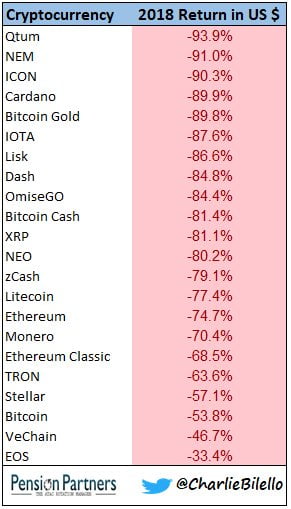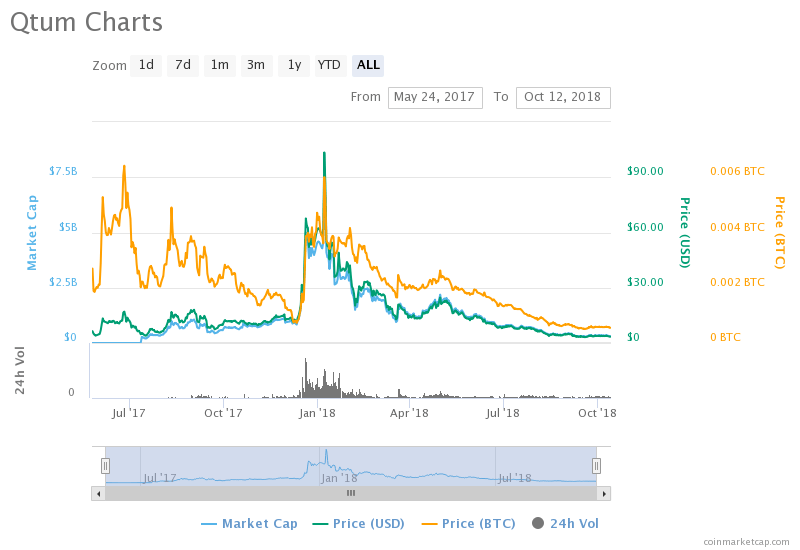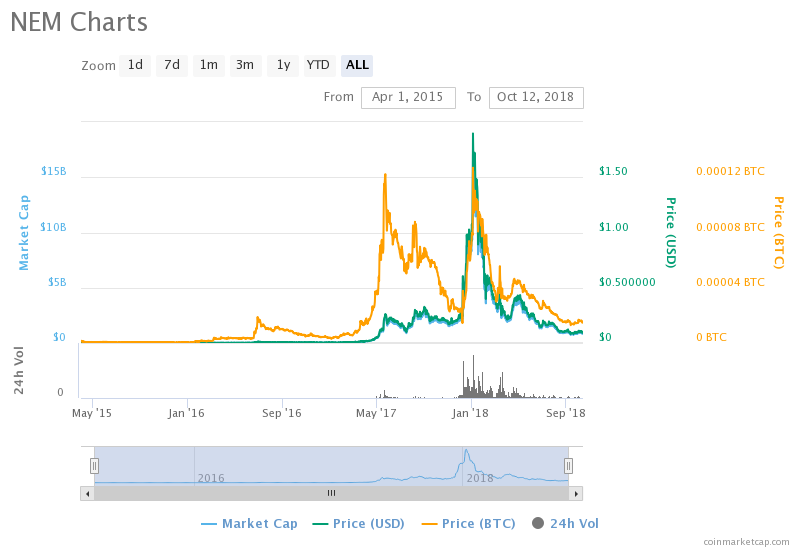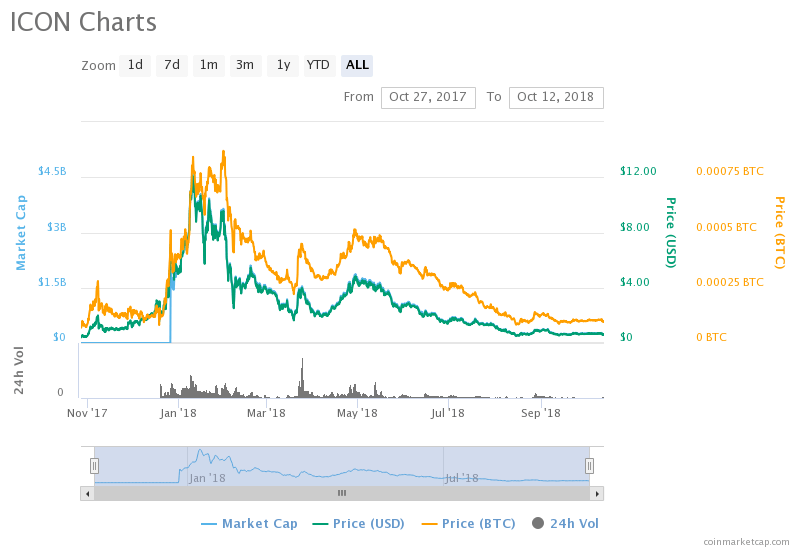Reason to trust

How Our News is Made
Strict editorial policy that focuses on accuracy, relevance, and impartiality
Ad discliamer
Morbi pretium leo et nisl aliquam mollis. Quisque arcu lorem, ultricies quis pellentesque nec, ullamcorper eu odio.
Investment consultation firm Pension Partners released an index listing the worst performing cryptocurrencies in 2018.
Qtum, a cryptocurrency-backed hybrid blockchain platform, suffered a maximum 93.9 percent loss by Q3 2018. A high marketing pitch, which projected Qtum as the best of both blockchain and mainstream worlds, allowed the project to establish an all-time high token value at $82.66 in January.
But eventually, Qtum project lost shine due to decreasing performance and increasing challenges. Its blockchain has seen a significant drop in the number of daily transactions, while the mining difficulty has also fallen drastically. At the press time, QTUM is trading at $3.47.
NEM Plunges 91%
The New Economy Movement, or NEM, began as a revolutionary blockchain project for enterprises. During early 2017, the Japanese firm received substantial financial support from local investors. NEM sold its XEM tokens at the initial rate of $0.00023107 and by the end of April 5th, 2015, the company had made its early investors a 68,537.2 percent profit. But like many other crypto assets, XEM too failed to sustain its upside and dropped squarely in 2018’s market-wide bearish bias.
NEM maintains its position among the top ten cryptocurrencies market cap, indicating it has retailed market attention and belief.
ICON (ICX) Drops 90%
ICX, like Ether, is a crypto-native to a blockchain project called ICON and has been one of the most affected victims of the market-wide bearish sentiment. The project has everything going on for itself: steady development, a good and reliable team and an ambitious goal to interconnect difference blockchains. But regardless of efforts, ICX remains one of the most underperforming crypto assets in 2018, with a negated 90 percent return for his early investors.
The ICX/USD is now trading at $0.61, much lower than its all-time high near $12.
Other Tokens

Cardano, Lisk, and IOTA despite their strong fundamentals have also dropped hugely in an overall bearish crypto market. While Cardano, a native token of a distributed computing platform, plunged by 89.9% by Q3 2018, Lisk and IOTA, two of the most talked-about blockchain protocol tokens, also imposed 86.6 and 87.6 percent losses on their holders, respectively.
At the same time, EOS and Bitcoin turned out to be the worst-best winners, dropping the least in the market-wide crash. EOS, a close competitor of a 74.7 percent down Ethereum, dropped 33.4 percent, while Bitcoin, the leading digital currency by market cap, dropped close to 54 percent.
Future Expectations
The uptrend of native coins still depends on the success of their blockchain ecosystems. As of now, Ripple, Ethereum and EOS are among the most promising blockchain projects as the demand for decentralized solutions will likely grow in 2019. Many analysts believe tokens like XRP, ETH, EOS, and LTC are in bottom formation phase. Bitcoin, for instance, is already holding its downtrend at a strong bottom area below $6,000.
Crypto market has found weak fundamentals in poor adoption, which again was caused by the lack of proper regulations and the failure of many blockchain projects. 2019 is considered to be a year that would bring more clarity from governments and regulators on crypto and blockchain alike. Likewise, more investments would follow suit, especially from institutional investors that are already joining crypto hedge funds, expecting a complete reverse of 2018’s bearish performance.






























